|
|
||||||||||||||||||||||||||||||||||||||||
The Quantified Self What are your personal metrics? The first three you'll certainly know: your height, your weight, and your age. But what about all the rest? How many steps did you take today? How far did you walk? How many stairs did you climb? How many hours and minutes did you actually sleep last night? How many calories did you burn and what's your body fat percentage right now? You're most likely asking yourself two things at this moment: (1) why is it so important to know all that stuff, and (2), if they're actually important to know, how do you determine your personal numbers? Good questions. Here are the answers. Understanding your personal metrics can lead to a substantial improvement in your health and quality of life. As our health care system becomes increasingly institutionalized (and some say, degraded), it's becoming increasingly necessary to take charge of our own well-being by modifying behavior and lifestyle. You can only make positive change by knowing your starting point, and to do that properly, you have to quantify things. Indeed, there's a whole movement underway that's known as "The Quantified Self" which promotes the idea that one ought to measure and record a great number of personal numbers. The term originated in 2007 when Wired Magazine editors Gary Wolf and Kevin Kelly wrote about "self-knowledge through self-tracking" even before affordable personal measurement/tracking devices became available. But a plethora of these devices are now on the market and provide the answer to question #2. For comparatively very little money, you can purchase a tiny device that will provide remarkable insight into your lifestyle/health habits. I'll focus on the device I personally use, the FitBit One, and later provide some information on other devices now on the market or expected shortly.
How To Wear it During the day, you clip the FitBit to your belt or your shirt or pants pocket, with the device inside. This makes it quite inconspicuous when compared to wristband trackers like the Jawbone Up and Nike+ FuelBand. Ladies, you can alternately clip it to your bra if you wish. At night, you remove the tracker and insert it into the mesh pocket of a comfortable sleep band. The FitBit One is sweat proof, rainproof, and splash proof. However, it is not rated for operation under one meter of water (no tracker is intended for use while swimming). One disadvantage of a clip-style device compared to a wristband one is that it's more likely to go for a trip through your washing machine if you forget to unclip it before doing laundry (AKA: the spin cycle of death). Anecdotal reports indicate survivability but I wouldn't count on it. What Does the FitBit One Measure?
Many health experts now advise that you should aim for 10,000 steps a day. However, most people take less than half that number. And that points to the main value of having an activity tracker. Knowing your number satisfies curiosity, but unless it leads to a positive change in behavior, it's just an intellectual exercise. However, I can tell you from personal experience, having one of these devices "watching" you is highly motivational. I now purposely park my car at the far end of the lot, just to rack up some extra points, take the steps instead of the elevator, and do lots of little extra things that get me up and moving each day. All your info can be viewed in graphical formats on a password-protected web site or on your smartphone screen. In addition to daily, weekly, and monthly summaries, you can see hour-by-hour breakdowns of activity through your day.Wireless Sync
Connection to Other Apps Perhaps more so than any other activity tracker, the FitBit connects and interacts with many other devices and services including LoseIt! (last month's article subject), MyFitnessPal, MapMyRun, Run Keeper, EndoMondo, and Spark People. You also have the ability to link in your social media and tap into the dedicated and vibrant FitBit user community. Sleep Tracking The biggest surprise I found after getting a FitBit was the value of analyzing my sleep patterns. While not as sophisticated as dedicated sleep trackers (which actually measure EEG waves but require wearing a headband), the FitBit can shift into a highly sensitive mode when you press and briefly hold its single button. This sleep-tracking mode is quite accurate at detecting when you're soundly asleep and when you're awakened at night (momentarily or longer). This knowledge can help you modify your environment and sleep habits to maximize your sleep efficiency and duration. Comparison Chart Here's a summary of the leading devices currently on the market or expected for release shortly. My personal opinion is that they may be made obsolete in the not-too-distant future when their functions are provided by a new generation of super-smart wristwatches like the Pebble or the expected Apple and Google watches. Also, I'm not including any of the software-only smartphone apps because they aren't practical 24/7 activity trackers and they drain the phone's battery quickly. For the moment, a dedicated tracking device is the best choice.
Why Bother with All This?
|

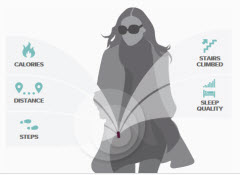
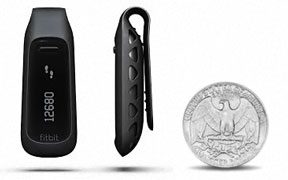
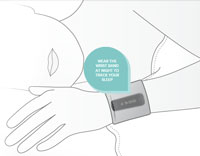
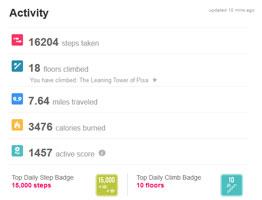
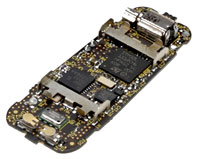
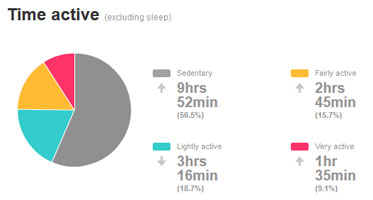
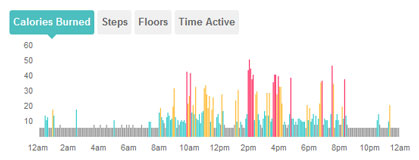

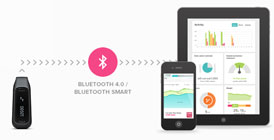
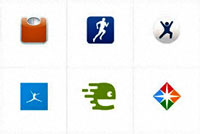
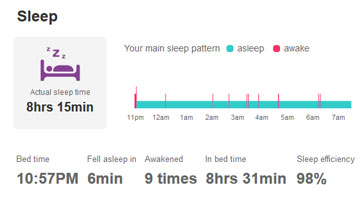
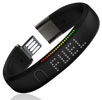
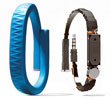
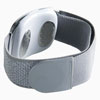

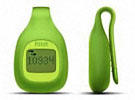


 It's ultimately up to you to manage the critical things in your life that are under your control. Health is a four legged-stool. The legs are good nutrition, exercise, stress control, and adequate sleep. If any of those four get cut short, your well-being will be put in jeopardy. Change and empowerment begin when you build awareness of the vital aspects of your life. If a little gadget will help in that quest for better health, it's well worth having.
It's ultimately up to you to manage the critical things in your life that are under your control. Health is a four legged-stool. The legs are good nutrition, exercise, stress control, and adequate sleep. If any of those four get cut short, your well-being will be put in jeopardy. Change and empowerment begin when you build awareness of the vital aspects of your life. If a little gadget will help in that quest for better health, it's well worth having.